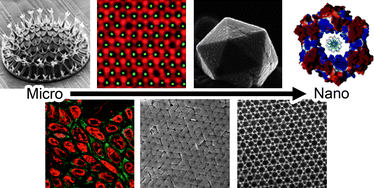Electrostatics at the nanoscale
Abstract
Electrostatic forces are amongst the most versatile interactions to mediate the assembly of nanostructured materials. Depending on experimental conditions, these forces can be long- or short-ranged, can be either attractive or repulsive, and their directionality can be controlled by the shapes of the charged nano-objects. This Review is intended to serve as a primer for experimentalists curious about the fundamentals of nanoscale electrostatics and for theorists wishing to learn about recent experimental advances in the field. Accordingly, the first portion introduces the theoretical models of electrostatic double layers and derives electrostatic interaction potentials applicable to particles of different sizes and/or shapes and under different experimental conditions. This discussion is followed by the review of the key experimental systems in which electrostatic interactions are operative. Examples include electroactive and “switchable”


 Please wait while we load your content...
Please wait while we load your content...